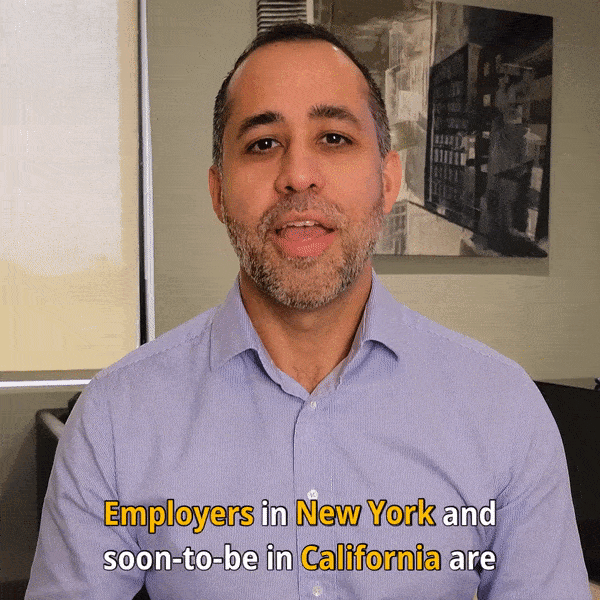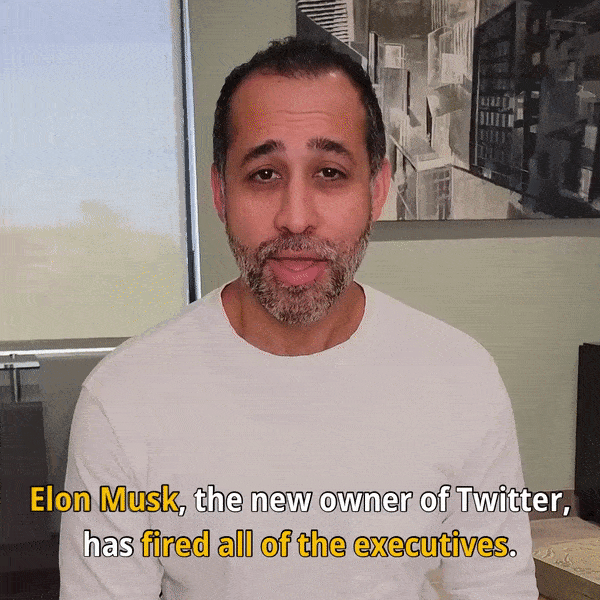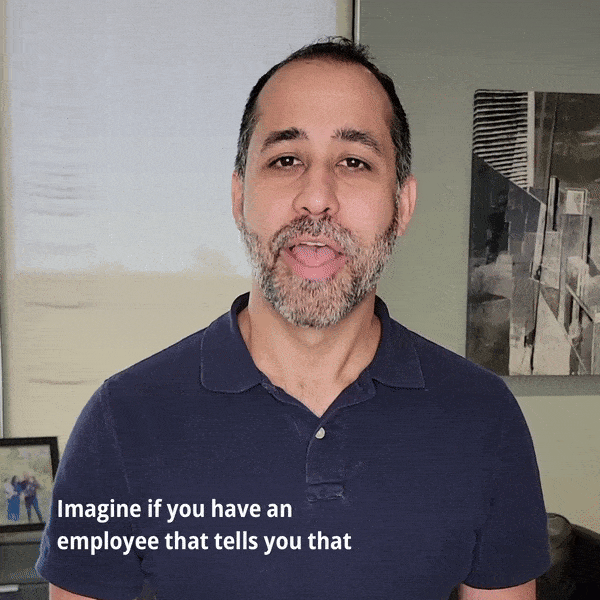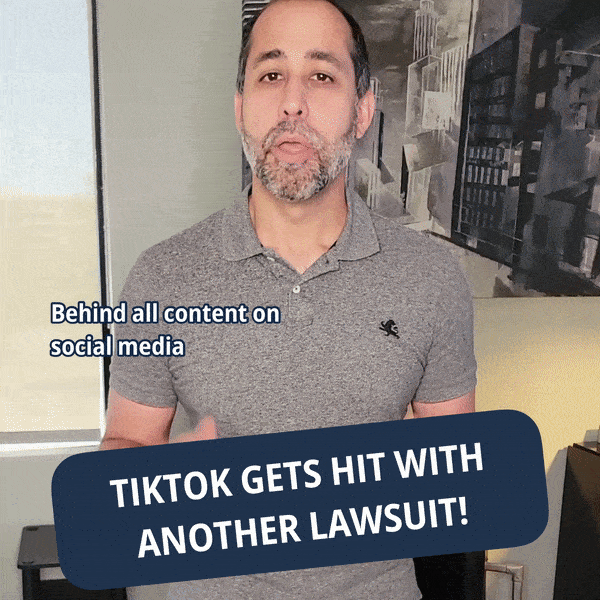Whether the gig economy is a smart approach to running a lean business or a shell game designed to shift costs and risks from employers to workers; whether it threatens the foundations of the American middle class or will be the force that could save the American worker, three things are clear:
- There is no shortage of hyperbole;
- It is increasingly the way that work gets done; and
- Relying on the label “independent contractor” is simply not enough. Employers and workers need to turn their attention to the provisions of federal and state law, as well as specific contractual provisions to understand potential risks and rewards of the arrangement.
The Way Work Happens
Much of the news coverage of the gig economy has focused on companies such Uber, Lyft and Airbnb, which have tried to position themselves as Internet companies that connect theoretically independent service providers with customers. The independent status of the providers is fundamental to this. Because these companies do not hire employees and pay benefits or own equipment they save major expenditures while making 15 percent to 30 percent on transactions. It looks like a license to print money.
The use of independent contractors, temps, freelancers or contingent workers is actually a phenomenon much larger than the activities of these high-flyers, however. According to the Freelancers Union, more than a third of the American workforce freelances and the percentage is expected reach half in the near future. Most college faculty is now made up of contingent workers. Many Millennials have spent their entire working lives freelancing.
The shift in the economy has been variously attributed to the decline of manufacturing, the Great Recession or the rise of technology that makes remote work possible, but it appears to many that the situation is likely to endure.
The rewards for independent workers include flexible scheduling, freedom to choose tasks and, under certain circumstances ownership of the product created. And quite frankly, most of the new jobs created since 2001 have been under contingent arrangements. The risk is economic insecurity.
The rewards for employers include flexible staffing and freedom from overtime, minimum wage, tax withholding, workers compensation and other employment laws, which can, as in the Uber model, bring down the cost of the service or product purchased. The immediate risk is loss of control over the time, place and manner in which the work is performed.
Prospective freelance employers should also consider a number of additional legal constraints. These arise from federal and state law as well as the contractual provisions imposed by the internet market-makers, such as Upwork, Elance or Guru.com, who provide a platform to connect workers with employers.
Federal Initiatives
It’s election season, and the plight of the American worker has once more become a staple of political rhetoric. The focus has largely been on the issues of overtime and minimum wage, neither of which applies to independent contractors.
The U.S. Department of Labor has, however, apparently taken a renewed interest in a perceived rise in the misclassification of workers as independent contractors rather than employees.
Misclassification of employees as independent contractors is found in an increasing number of workplaces in the United States, in part reflecting larger restructuring of business organizations. When employers improperly classify employees as independent contractors, the employees may not receive important workplace protections such as the minimum wage, overtime compensation, unemployment insurance, and workers’ compensation. Misclassification also results in lower tax revenues for government and an uneven playing field for employers who properly classify their workers. Although independent contracting relationships can be advantageous for workers and businesses, some employees may be intentionally misclassified as a means to cut costs and avoid compliance with labor laws.
It appears to be prepared to step up enforcement action and has reiterated that it will apply a very broad standard in determining whether a worker is an employee. The six factors the DOL will consider include:
- Whether the work is an integral part of the employer’s business;
- Whether the worker’s managerial skill affects the worker’s opportunity for profit or loss;
- The worker’s relative investment compared to the employer’s;
- Whether the work performed requires skill and initiative;
- Whether the relationship between the worker and employer is permanent or indefinite;
- The nature and degree of the employer’s control.
At the very least, employers should be aware that the designation of a worker as an independent contractor in a service agreement is not dispositive of the issue.
In assessing whether a worker is an employee for tax withholding purposes, the IRS uses a different set of criteria, but the test is similarly broad. The IRS and many states have begun what some tax practitioners describe as a “witch hunt” to identify businesses that improperly classify workers as 1099 independent contractors when they should really be classified as W-2 employees. The state of California can fine business owners as much as $5,000 per misclassified worker.
California law
Many of the recent employment law initiatives have been the subject of state, rather than federal legislation, however. In California, employers should be particularly alert to the risk of legal liability for the misclassification of workers by labor service providers. Under Assembly Bill 1897, a business that employs 25 or more workers and obtains the services of at least five workers through a labor contractor will share civil liability and legal responsibility with the labor contractor for payment of wages, safety and workers’ compensation.
A California employer who engages a worker for a limited period of time and task, with the clear understanding that the individual is an independent contractor may, nonetheless, find itself legally liable for wages or workers compensation if the temp agency or internet platform has, itself, misclassified the worker as an independent contractor, rather than its employee. The law potentially has a very long arm.
California law is particularly protective of the rights of employees, but employers throughout the country should be aware of the need to be aware of state law provisions relating to the misclassification of workers.
Contract Hot Spots
In addition to statutory provisions, employers who are considering hiring freelancers or contingent gig workers should review or work with counsel to review the service agreements carefully. These contracts typically contain several sections that deserve particular attention.
A description of the worker as an independent contractor. The language will likely be something like,
Employer assumes all liability for determining whether Freelancers are independent contractors or employees and engaging them accordingly; [the internet intermediary] disclaims any liability for such determination or the related Engagement. This Agreement does not create a partnership or agency relationship between Employer and Freelancer.
Remember that this language is not dispositive of the situation in the eyes of the DOL or the IRS.
A provision that relieves the intermediary of obligations under the contract executed between the freelancer and the employer, except as a third party beneficiary. This is intended to shift any legal liability away from the intermediary and toward the employer, should it be determined that the worker is a misclassified employee.
A description of intellectual property rights. Under common law principles, an independent contractor owns the rights to intellectual property created. Employers should ensure that the contract specifically assigns those rights to the employer for whom the work is created. If the employer will be sharing proprietary information with the worker, it is important that the service agreement contain non-disclosure language.
Indemnity clauses. The intermediary will likely seek an indemnity agreement from the employer that will make the intermediary whole in the event of litigation, either at the behest of a governmental agency or the worker.
Dispute resolution provisions. The service contract will often include choice of law provisions that specify which state or national laws will apply in the event of a dispute between the parties. Service agreements also frequently call for binding arbitration in the event of a dispute. The dispute resolutions may be particularly important where the freelancer is not a U.S.-based person. If the employer’s interests are injured in some way by the actions of an individual who is overseas, the employer may have very little legal recourse.
For better or worse, the gig economy appears to have taken hold as a relatively permanent feature of the way that work is done. This is especially true for smaller businesses and those with a significant online presence. It can have its advantages for both workers and employers, but it is not without risk for either party.
Employers should be mindful of increased enforcement action on the part of the DOL and the IRS, as well as state governments, around the issue of worker misclassification. With the growth of online platforms that provide a way for employers and workers to connect, employers should ensure that they understand the allocation of legal risk as described in service agreements.
Finally, it is important to stay aware of national and state political response to what appears to be a sea change in fundamental nature of employment. At present, the drift appears to be toward allocating more responsibility for worker welfare to employers, but as that relationship becomes more complicated and tenuous with the rise temporary, contingent and freelance work, other structures may arise to provide benefits and security for workers.


![Unraveling the Workforce: Navigating the Aftermath of Mass Layoffs [e322]](https://www.pashalaw.com/wp-content/uploads/2023/07/Untitled-design-23-1024x723.png)
![Return to the Office vs. Remote: What Can Employers Legally Enforce? [e321]](https://www.pashalaw.com/wp-content/uploads/2023/01/Pasha_LSSB_321_banner-1024x723.jpg)


![California v. Texas: Which is Better for Business? [313]](https://www.pashalaw.com/wp-content/uploads/2021/07/Pasha_LSSB_CaliforniaVSTexas-1024x723.jpg)




![Employers vs. Employees: When Are Employment Restrictions Fair? [e318]](https://www.pashalaw.com/wp-content/uploads/2022/05/Pasha_LSSB_EmployeesVsEmployers_banner-1-1024x723.jpg)






![Law in the Digital Age: Exploring the Legal Intricacies of Artificial Intelligence [e323]](https://www.pashalaw.com/wp-content/uploads/2023/11/WhatsApp-Image-2023-11-21-at-13.24.49_4a326c9e-300x212.jpg)
![Unraveling the Workforce: Navigating the Aftermath of Mass Layoffs [e322]](https://www.pashalaw.com/wp-content/uploads/2023/07/Untitled-design-23-300x212.png)
![Return to the Office vs. Remote: What Can Employers Legally Enforce? [e321]](https://www.pashalaw.com/wp-content/uploads/2023/01/Pasha_LSSB_321_banner-300x212.jpg)
![Explaining the Hans Niemann Chess Lawsuit v. Magnus Carlsen [e320]](https://www.pashalaw.com/wp-content/uploads/2022/10/LAWYER-EXPLAINS-7-300x169.png)
![California v. Texas: Which is Better for Business? [313]](https://www.pashalaw.com/wp-content/uploads/2021/07/Pasha_LSSB_CaliforniaVSTexas-300x212.jpg)
![Buyers vs. Sellers: Negotiating Mergers & Acquisitions [e319]](https://www.pashalaw.com/wp-content/uploads/2022/06/Pasha_LSSB_BuyersVsSellers_banner-300x212.jpg)
![Employers vs. Employees: When Are Employment Restrictions Fair? [e318]](https://www.pashalaw.com/wp-content/uploads/2022/05/Pasha_LSSB_EmployeesVsEmployers_banner-1-300x212.jpg)
![Vaccine Mandates Supreme Court Rulings [E317]](https://www.pashalaw.com/wp-content/uploads/2022/02/WhatsApp-Image-2022-02-11-at-4.10.32-PM-300x212.jpeg)
![Business of Healthcare [e316]](https://www.pashalaw.com/wp-content/uploads/2021/11/Pasha_LSSB_BusinessofHealthcare_banner-300x212.jpg)
![Social Media and the Law [e315]](https://www.pashalaw.com/wp-content/uploads/2021/10/WhatsApp-Image-2021-10-06-at-1.43.08-PM-300x212.jpeg)
![Defining NDA Boundaries: When does it go too far? [e314]](https://www.pashalaw.com/wp-content/uploads/2021/09/Pasha_LSSB_NDA_WordPress-2-300x212.jpg)
![More Than a Mistake: Business Blunders to Avoid [312] Top Five Business Blunders](https://www.pashalaw.com/wp-content/uploads/2021/06/Pasha_LSSB_Blunders_WP-1-300x212.jpg)
![Is There a Right Way to Fire an Employee? We Ask the Experts [311]](https://www.pashalaw.com/wp-content/uploads/2021/02/Pasha_LSSB_FireAnEmployee_Website-300x200.jpg)
![The New Frontier: Navigating Business Law During a Pandemic [310]](https://www.pashalaw.com/wp-content/uploads/2020/12/Pasha_LSSB_Epidsode308_Covid_Web-1-300x200.jpg)
![Wrap Up | Behind the Buy [8/8] [309]](https://www.pashalaw.com/wp-content/uploads/2020/11/Pasha_BehindTheBuy_Episode8-300x200.jpg)
![Is it all over? | Behind the Buy [7/8] [308]](https://www.pashalaw.com/wp-content/uploads/2020/09/iStock-1153248856-overlay-scaled-300x200.jpg)
![Fight for Your [Trademark] Rights | Behind the Buy [6/8] [307]](https://www.pashalaw.com/wp-content/uploads/2020/07/Fight-for-your-trademark-right-300x200.jpg)
![They Let It Slip | Behind the Buy [5/8] [306]](https://www.pashalaw.com/wp-content/uploads/2020/06/Behind-the-buy-they-let-it-slip-300x200.jpg)
![Mo’ Investigation Mo’ Problems | Behind the Buy [4/8] [305]](https://www.pashalaw.com/wp-content/uploads/2020/05/interrobang-1-scaled-300x200.jpg)
![Broker or Joker | Behind the Buy [3/8] [304] Behind the buy - Broker or Joker](https://www.pashalaw.com/wp-content/uploads/2020/04/Joker-or-Broker-1-300x185.jpg)
![Intentions Are Nothing Without a Signature | Behind the Buy [2/8] [303]](https://www.pashalaw.com/wp-content/uploads/2020/04/intentions-are-nothing-without-a-signature-300x185.jpg)
![From First Steps to Final Signatures | Behind the Buy [1/8] [302]](https://www.pashalaw.com/wp-content/uploads/2020/04/first-steps-to-final-signatures-300x185.jpg)
![The Dark-side of GrubHub’s (and others’) Relationship with Restaurants [e301]](https://www.pashalaw.com/wp-content/uploads/2015/04/When-Competition-Goes-Too-Far-Ice-Cream-Truck-Edition-300x201.jpg)
![Ultimate Legal Breakdown of Internet Law & the Subscription Business Model [e300]](https://www.pashalaw.com/wp-content/uploads/2019/05/Ultimate-Legal-Breakdown-of-Internet-Law-the-Subscription-Business-Model-300x196.jpg)
![Why the Business Buying Process is Like a Wedding?: A Legal Guide [e299]](https://www.pashalaw.com/wp-content/uploads/2019/03/futura-300x169.jpg)
![Will Crowdfunding and General Solicitation Change How Companies Raise Capital? [e298]](https://www.pashalaw.com/wp-content/uploads/2018/11/Will-Crowdfunding-and-General-Solicitation-Change-How-Companies-Raise-Capital-300x159.jpg)
![Pirates, Pilots, and Passwords: Flight Sim Labs Navigates Legal Issues (w/ Marc Hoag as Guest) [e297]](https://www.pashalaw.com/wp-content/uploads/2018/07/flight-sim-labs-300x159.jpg)
![Facebook, Zuckerberg, and the Data Privacy Dilemma [e296] User data, data breach photo by Pete Souza)](https://www.pashalaw.com/wp-content/uploads/2018/04/data-300x159.jpg)
![What To Do When Your Business Is Raided By ICE [e295] I.C.E Raids business](https://www.pashalaw.com/wp-content/uploads/2018/02/ice-cover-300x159.jpg)
![General Contractors & Subcontractors in California – What you need to know [e294]](https://www.pashalaw.com/wp-content/uploads/2018/01/iStock-666960952-300x200.jpg)
![Mattress Giants v. Sleepoplis: The War On Getting You To Bed [e293]](https://www.pashalaw.com/wp-content/uploads/2017/12/sleepopolis-300x159.jpg)
![The Harassment Watershed [e292]](https://www.pashalaw.com/wp-content/uploads/2017/12/me-2-300x219.jpg)
![Investing and Immigrating to the United States: The EB-5 Green Card [e291]](https://www.pashalaw.com/wp-content/uploads/2012/12/eb-5-investment-visa-program-300x159.jpg)
![Responding to a Government Requests (Inquiries, Warrants, etc.) [e290] How to respond to government requests, inquiries, warrants and investigation](https://www.pashalaw.com/wp-content/uploads/2017/10/iStock_57303576_LARGE-300x200.jpg)
![Ultimate Legal Breakdown: Employee Dress Codes [e289]](https://www.pashalaw.com/wp-content/uploads/2017/08/Ultimate-Legal-Breakdown-Template-1-300x159.jpg)
![Ultimate Legal Breakdown: Negative Online Reviews [e288]](https://www.pashalaw.com/wp-content/uploads/2017/06/Ultimate-Legal-Breakdown-Online-Reviews-1-300x159.jpg)
![Ultimate Legal Breakdown: Social Media Marketing [e287]](https://www.pashalaw.com/wp-content/uploads/2017/06/ultimate-legal-breakdown-social-media-marketing-blur-300x159.jpg)
![Ultimate Legal Breakdown: Subscription Box Businesses [e286]](https://www.pashalaw.com/wp-content/uploads/2017/03/ultimate-legal-breakdown-subscription-box-services-pasha-law-2-300x159.jpg)
![Can Companies Protect Against Foreseeable Misuse of Apps [e285]](https://www.pashalaw.com/wp-content/uploads/2017/01/iStock-505291242-300x176.jpg)
![When Using Celebrity Deaths for Brand Promotion Crosses the Line [e284]](https://www.pashalaw.com/wp-content/uploads/2017/01/celbrity-300x159.png)
![Are Employers Liable When Employees Are Accused of Racism? [e283] Racist Employee](https://www.pashalaw.com/wp-content/uploads/2016/12/Are-employers-liable-when-an-employees-are-accused-of-racism-300x159.jpg)
![How Businesses Should Handle Unpaid Bills from Clients [e282] What to do when a client won't pay.](https://www.pashalaw.com/wp-content/uploads/2016/12/How-Businesses-Should-Handle-Unpaid-Bills-to-Clients-300x159.png)
![Can Employers Implement English Only Policies Without Discriminating? [e281]](https://www.pashalaw.com/wp-content/uploads/2016/11/Can-Employers-Impliment-English-Only-Policies-Without-Discriminating-300x159.jpg)
![Why You May No Longer See Actors’ Ages on Their IMDB Page [e280]](https://www.pashalaw.com/wp-content/uploads/2016/10/IMDB-AGE2-300x159.jpg)
![Airbnb’s Discrimination Problem and How Businesses Can Relate [e279]](https://www.pashalaw.com/wp-content/uploads/2016/09/airbnb-300x159.jpg)
![What To Do When Your Amazon Account Gets Suspended [e278]](https://www.pashalaw.com/wp-content/uploads/2016/09/What-To-Do-When-Your-Amazon-Account-Gets-Suspended-1-300x200.jpg)
![How Independent Artists Reacted to Fashion Mogul Zara’s Alleged Infringement [e277]](https://www.pashalaw.com/wp-content/uploads/2016/08/How-Independent-Artists-Reacted-to-Fashion-Mogul-Zaras-Alleged-Infringement--300x159.jpg)
![Can Brave’s Ad Replacing Software Defeat Newspapers and Copyright Law? [e276]](https://www.pashalaw.com/wp-content/uploads/2016/08/Can-Braves-Ad-Replacing-Software-Defeat-Newspapers-and-Copyright-Law-300x159.jpg)
![Why The Roger Ailes Sexual Harassment Lawsuit Is Far From Normal [e275]](https://www.pashalaw.com/wp-content/uploads/2016/07/WHY-THE-ROGER-AILES-SEXUAL-HARASSMENT-LAWSUIT-IS-FAR-FROM-NORMAL-300x159.jpeg)
![How Starbucks Turned Coveted Employer to Employee Complaints [e274]](https://www.pashalaw.com/wp-content/uploads/2016/07/iStock_54169990_LARGE-300x210.jpg)
